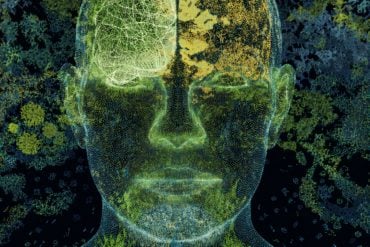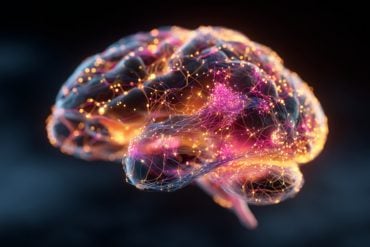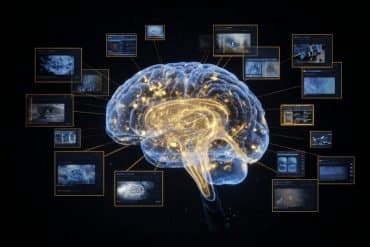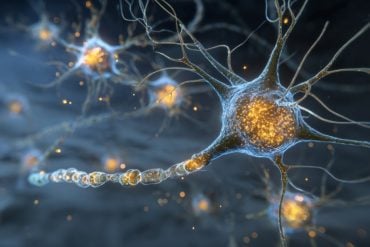Key Questions Answered
Q: How does psychopathy affect emotion recognition?
A: Individuals with psychopathic traits—especially those high in Factor 1—struggle to recognize negative facial expressions like fear and sadness, often showing reduced amygdala activity and diminished attention to emotional cues.
Q: What role does oxytocin play in facial emotion recognition?
A: Oxytocin enhances social salience by increasing attention to facial features (especially the eyes), improving emotion recognition, and modulating neural activity in key regions like the amygdala and prefrontal cortex.
Q: Can oxytocin-based therapies help people with psychopathic traits?
A: Preliminary evidence suggests oxytocin may normalize neural and behavioral deficits tied to psychopathy, particularly by enhancing empathy and reducing aggression, but more targeted, dimension-specific research is needed.
Summary: Psychopathy impairs the ability to recognize and respond appropriately to emotional facial expressions, often disrupting empathy and social behavior. A new review explores whether oxytocin—a neuropeptide known to promote social bonding—can help compensate for these deficits.
While no direct studies exist yet, separate research on oxytocin and psychopathy points to promising, dimension-specific benefits. The findings suggest that oxytocin might one day be used to improve emotional understanding and reduce antisocial behaviors in individuals with psychopathic traits.
Key Facts
- F1 vs. F2 Traits: Factor 1 (Interpersonal-affective) traits are linked to emotional detachment and reduced amygdala response, while Factor 2 (Lifestyle-antisocial) traits involve impulsivity and hyperreactivity.
- Oxytocin’s Effects: Intranasal oxytocin boosts emotion recognition accuracy, eye-gazing, and neural responses, particularly to negative emotional faces.
- Therapeutic Potential: Oxytocin may normalize both under- and over-reactive neural responses in psychopathy, potentially enhancing empathy and reducing aggression.
Source: Neuroscience News
Psychopathy is a complex and often misunderstood condition characterized by emotional detachment, lack of empathy, impulsivity, and antisocial behavior.
These traits severely impact social functioning and pose considerable risks not only to the individuals themselves but to society at large—ranging from interpersonal dysfunction to manipulative or violent acts.

A new scoping review offers an intriguing angle into how the neuropeptide oxytocin might help address these impairments, particularly by enhancing facial emotion recognition and modulating neural responses tied to empathy and aggression.
The review systematically assessed studies on two major fronts: the psychophysiological mechanisms of emotion recognition in people with psychopathic traits and the effects of oxytocin on those same mechanisms.
Surprisingly, no studies to date have directly investigated oxytocin’s effects on individuals with psychopathy using facial emotion recognition tasks.
Instead, the authors synthesized findings from 66 studies exploring these elements separately. Their findings suggest that the effects of oxytocin—and the emotional recognition deficits in psychopathy—are not only real but strikingly dimension-specific.
Two Faces of Psychopathy
Modern psychological tools often divide psychopathy into two primary dimensions. The first, termed “Interpersonal-affective” (Factor 1 or F1), is characterized by superficial charm, emotional detachment, and a lack of guilt or empathy. The second, “Lifestyle-antisocial” (Factor 2 or F2), includes traits like impulsivity, poor behavioral control, and a history of criminal behavior.
These dimensions show divergent patterns of brain activity and behavioral response to emotional stimuli. Individuals with F1 traits often exhibit blunted physiological responses to others’ emotions—particularly fear and sadness. Studies show reduced amygdala activation and diminished attention to emotional facial cues in this group.
Conversely, F2 traits are linked with heightened emotional reactivity, especially in response to anger and threat, and are associated with reactive aggression and impulsivity. Understanding these divergent patterns is critical to developing targeted interventions.
The Social Salience Hypothesis
Oxytocin has long been recognized as a “prosocial” neuropeptide—associated with trust, bonding, and empathy. It exerts its effects both centrally, through widespread brain receptors (particularly in the amygdala and prefrontal cortex), and peripherally, through systems involved in arousal and attention.
A compelling hypothesis—known as the “Social Salience Hypothesis”—suggests that oxytocin enhances the brain’s ability to assign importance to social stimuli, such as emotional expressions.
Intranasal oxytocin (in-OT) has been shown to increase attention to the eye region of faces, enhance pupil dilation (a marker of arousal), and increase activity in brain regions like the fusiform gyrus and anterior cingulate cortex—all of which are involved in emotion recognition. These effects align with the deficits seen in psychopathy, especially in F1-related traits.
Psychopathy, Emotion Recognition, and Oxytocin: A Three-Way Interaction
The review highlights numerous studies demonstrating that individuals with psychopathic traits—particularly those high in F1—struggle to recognize and interpret facial emotions, particularly fear, sadness, and disgust.
These impairments appear in both behavioral tasks and physiological measures such as amygdala activation, event-related potentials (e.g., N170 amplitude), eye-gaze tracking, and pupil dilation.
Interestingly, oxytocin appears to modulate many of these same markers—but in the opposite direction. For example, oxytocin can enhance N170 amplitude during the early stages of face processing and increase gaze toward the eye region, which is crucial for interpreting emotion. This convergence suggests a potential therapeutic avenue: oxytocin might counteract the emotion recognition deficits seen in psychopathy.
But the picture is more nuanced for individuals with F2 traits. These individuals often show hyperactivity in the amygdala and other threat-sensitive regions, correlating with impulsivity and reactive aggression. Oxytocin’s effects in this context appear to dampen overactive fear and anger responses.
Several studies showed that in-OT reduced amygdala activation in response to angry faces in individuals with antisocial traits, potentially reducing impulsive and aggressive responses.
Beyond Behavior: Oxytocin and Brain Modulation
Functional MRI studies in non-psychopathic populations reveal that oxytocin administration modulates activity in key brain areas involved in emotion processing and regulation, including the amygdala, anterior insula, and ventromedial prefrontal cortex.
These changes appear to promote prosocial behavior, increase emotional awareness, and reduce sensitivity to perceived threats. In clinical populations such as those with autism or social anxiety, oxytocin has been shown to normalize activity in these circuits, improving social interaction and emotional understanding.
While few studies have assessed oxytocin in people with high psychopathic traits directly, those that have—including individuals with antisocial personality disorder (ASPD)—support its potential efficacy.
For example, oxytocin has been found to reverse hyperactivity in the amygdala among violent offenders and improve emotion recognition in forensic patients. Among youths with callous-unemotional traits (an early marker of psychopathy), oxytocin increased empathy and attention to emotional cues.
Implications and Future Directions
Although evidence remains preliminary, the review paints an encouraging picture of oxytocin as a possible modulator of the social impairments seen in psychopathy. Notably, its effects appear to operate along the same neurophysiological pathways disrupted in psychopathy, suggesting a well-matched mechanism of action.
However, significant research gaps remain. To date, no studies have directly tested oxytocin’s effects on emotion recognition in adults with psychopathy using dimensional trait analyses. This is a critical oversight, given the heterogeneity of psychopathy and the likelihood that F1 and F2 traits may respond differently to treatment.
The authors call for future studies to integrate oxytocin administration with facial emotion recognition tasks in populations with varied psychopathic traits, using both behavioral and physiological markers (e.g., fMRI, EEG, eye tracking, and pupillometry). Such studies could illuminate whether oxytocin’s benefits are trait-specific—and whether it holds promise as a targeted therapy for this difficult-to-treat condition.
Conclusion
Psychopathy presents a formidable challenge to neuroscience, psychology, and society. Its complex dimensions influence perception, emotional engagement, and behavior in ways that disrupt human connection and empathy.
This scoping review suggests that oxytocin—a molecule traditionally linked with love and trust—might hold the key to improving social functioning in those with psychopathic traits.
By enhancing emotion recognition and modulating the neural systems of empathy and aggression, oxytocin could pave the way for novel, dimension-specific interventions in psychopathy.
With targeted research and careful clinical application, what was once seen as an untreatable disorder may one day become more manageable—and more understood.
About this psychopathy and neuroscience research news
Author: Neuroscience News Communications
Source: Neuroscience News
Contact: Neuroscience News Communications – Neuroscience News
Image: The image is credited to Neuroscience News
Original Research: Open access.
“Psychophysiology of facial emotion recognition in psychopathy dimensions and oxytocin’s role: A scoping review” by Sara Ferreira-Nascimento et al. PLOS ONE
Abstract
Psychophysiology of facial emotion recognition in psychopathy dimensions and oxytocin’s role: A scoping review
Psychopathy is characterized by social impairments that hinder effective societal functioning.
It comprises two main dimensions: “Interpersonal-affective” and “Lifestyle-antisocial,” each associated with distinct patterns of traits and central and peripheral neurocorrelates, particularly concerning social salience and oxytocin function.
In this review, we systematically identified and synthesized evidence from studies investigating oxytocin’s role in the psychophysiological correlates of emotion recognition across psychopathy dimensions.
However, as no such direct studies were identified, we instead compiled and analyzed research examining these variables separately.
A scoping review was conducted to capture studies reporting on psychopathy or oxytocin in relation to facial emotion recognition, whether or not they included central or peripheral psychophysiological measurements – retrieving 66 articles.
We found distinct emotion recognition outcomes between psychopathy dimensions, some even with opposing neural activity in response to emotional expressions, particularly those of negative valence, as assessed through neuroimaging, electrophysiology, eye-gazing, and pupillometry.
Oxytocin presented suggestive positive/compensatory effects on social salience, enhancing emotion recognition, and increasing pupil dilation, and eye-gazing towards faces, and decreasing brain activation towards negative emotions.
This review highlights the critical need for future studies to bridge the gap between psychopathy and oxytocin research by exploring their interaction on shared psychophysiological correlates.
Such efforts could facilitate the identification of dimension-specific diagnostic biomarkers and targeted interventions for psychopathy.







